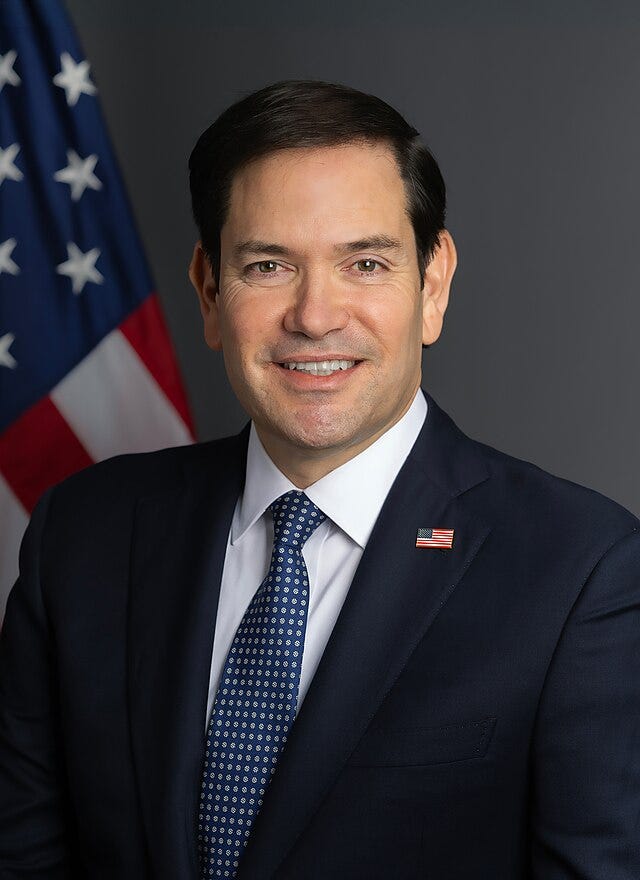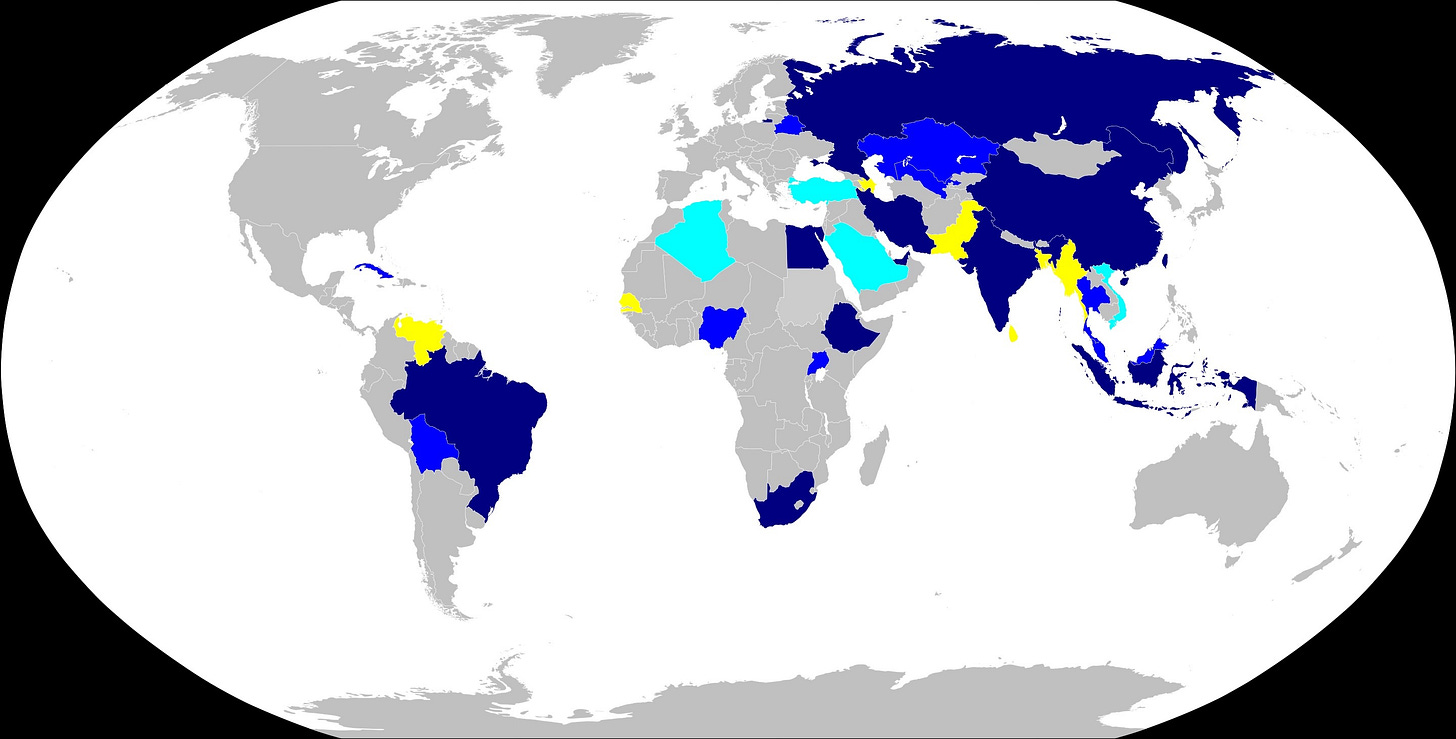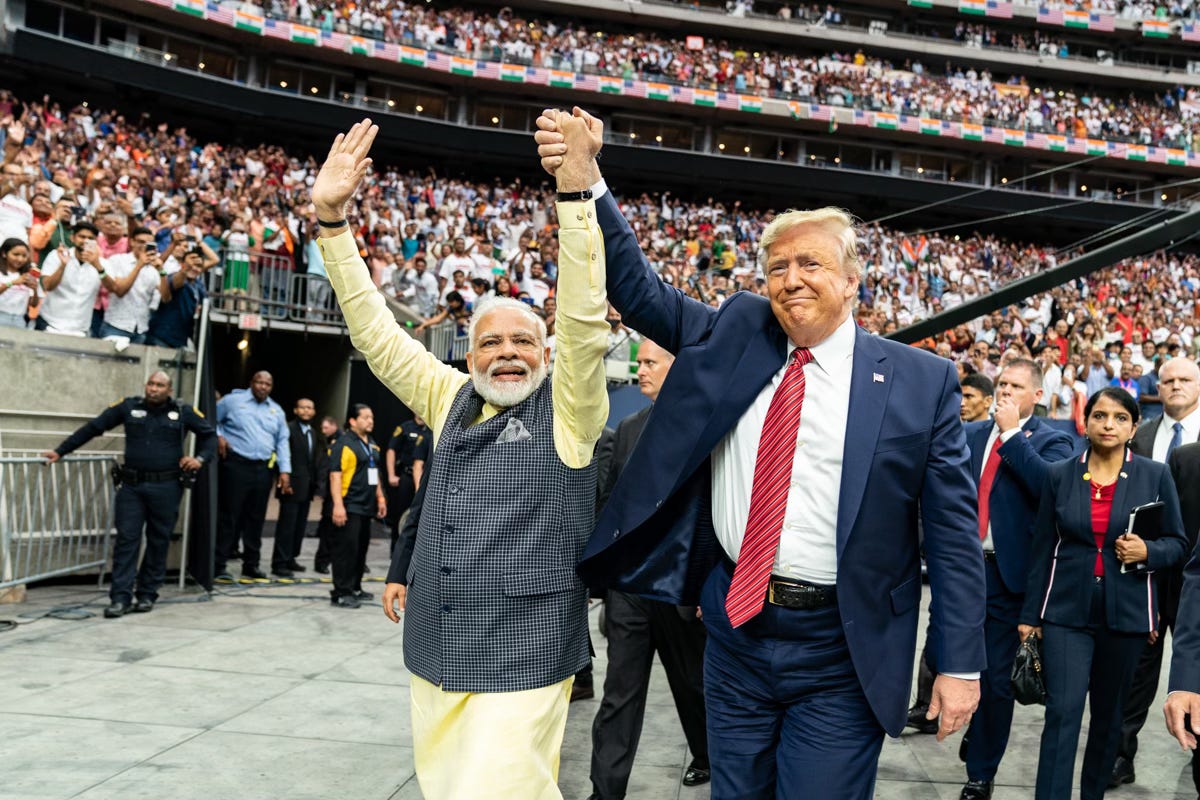India and the United States must stand together.
India is the counterweight to the ascendent communist superpower.
“As a democracy under the rule of law, that’s well and truly assimilated the best of its heritage from Britain, India was always a more natural fit with the West than with the old Soviet Union.”
While there’s much to cheer in the second Trump presidency’s foreign policy, such as the bombing of Iran’s nuclear facilities and the freeing of the Israeli hostages, there’s one especially puzzling anomaly from an administration otherwise pledged to winning the new Cold War with China. Why would a leader who thinks Russia is more Europe’s concern than America’s, and who thinks that China has been building its economic and military strength at America’s expense, suddenly impose penalty tariffs on India because it has been buying Russian oil and gas?
First, this action seems to put the goal of constraining Russia over the more important goal of containing China. Second, it has put at risk two decades of careful cultivation of India as the essential democratic counterweight to an ascendant communist superpower. And third, it was unaccompanied by any simultaneous penalties on China, which hasn’t just been funding Russia’s war against Ukraine with vast oil and gas purchases but also massively supplying Russia with drones and munitions.
Of course, it’s possible that the China focus of “hawks” such as Secretaries Rubio and Hegseth is not entirely, or only intermittently shared in the Oval Office. It’s possible that a MAGA-minded President has notions of a hemispheric “grand bargain” with Beijing to secure the Americas while leaving Eurasia to China. Perhaps Prime Minister Modi’s reluctance to accept that US intervention had settled the May military confrontation with Pakistan played into the August decision to impose a 25% penalty tariff on top of the earlier “liberation day” 25% tariff on India.


Regardless of its motivations, there’s no doubting India’s dismay and anger at what it thinks is harsh, unfair and biased treatment. The previously warm relations between Narendra Modi and Donald Trump (exemplified by the Howdy Modi rallies of the first Trump term) has doubtless added to Delhi’s perplexity. What’s all-but-certain is that the Quad leaders’ meeting that had been slated for Delhi in November now won’t happen. Given that informal arrangements like the Quad (and like the Five Eyes) depend entirely upon a shared mindset, nourished by regular high-level contact, this is a serious rupture, especially as China’s assertiveness grows daily.
Given China’s repeated declarations that it intends to be the world’s top power by mid-century, its insistence on taking Taiwan by force if necessary, and its public commitment to be capable of invasion by 2027, this is hardly the time for dissension among the Indo-Pacific democracies pledged to preserve the rules-based order and to prevent violations of Taiwan’s practical independence.

It would vastly complicate Beijing’s calculations of likely success if it had to worry about Indian manoeuvres on the disputed Himalayan border as well as to ponder likely responses to an escalating blockade, followed by an air and sea assault across the Taiwan Strait. Yet Modi can hardly be blamed for playing up his attendance at the BRICS summit in Shanghai (although not, significantly, the subsequent military parade in Beijing), given Trump’s earlier White House hospitality for the Pakistani armed forces chief (and reported Trump family business dealings in Pakistan).
After widespread coverage of the personal warmth between the leaders of China, Russia and India, Trump subsequently posted that India (with Russia) had been “lost” to “deepest, darkest China”. Is this true? Other than “would America defend Taiwan?”, this is perhaps the biggest question in geo-politics today.
Trump’s ongoing readiness to engage with Putin, despite his “no limits” partnership with Beijing, suggests that his impulsive social post might have been momentary pique. A president who’s prepared for repeated futile talks with a militarist dictator, who’s lacking the slightest interest in any peace short of Ukraine’s surrender, is hardly committed to keep cold-shouldering democratic India.
Besides, China’s constant nibbling at India’s borders and its instinct to dominate, means that an Indian partnership with its fellow democracies is not just in accordance with India’s values but also with its abiding interests.
As a democracy under the rule of law, that has well and truly assimilated the best of its heritage from Britain, India was always a more natural fit with the West than with the old Soviet Union. It was always an American mistake to regard India’s former leadership of the non-aligned movement as a de-facto alliance with the Russians; and to regard its current leadership of the so-called “global south” as much more than an attempt speak up for the world’s “have-nots”. India’s reluctance to be publicly critical of Russia’s brutal invasion of Ukraine does not signify any tilt to autocracy – just gratitude for Russia’s past help that extends even to providing India with its first two nuclear powered submarines.
Likewise, turning up for the BRICS meeting was much more an instant riposte to Trump than any real intention to play second or third fiddle to China and Russia. India will no more be a junior partner to China than it will be a junior partner to America. Luckily, America does not normally expect subservience from its friends; just a willingness to pull their weight in advancing mutual interests and shared values.
America needs India, because only India can realistically substitute for China in the West’s critical supply chains. India needs America, because without American strength, China’s hegemonic ambitions are likely to be realised with dire consequences for all China’s neighbours. The human factor in history should never be underestimated but individual leaders eventually move on. More influential in the long run are the permanent interests and the enduring values bringing India and America together.


